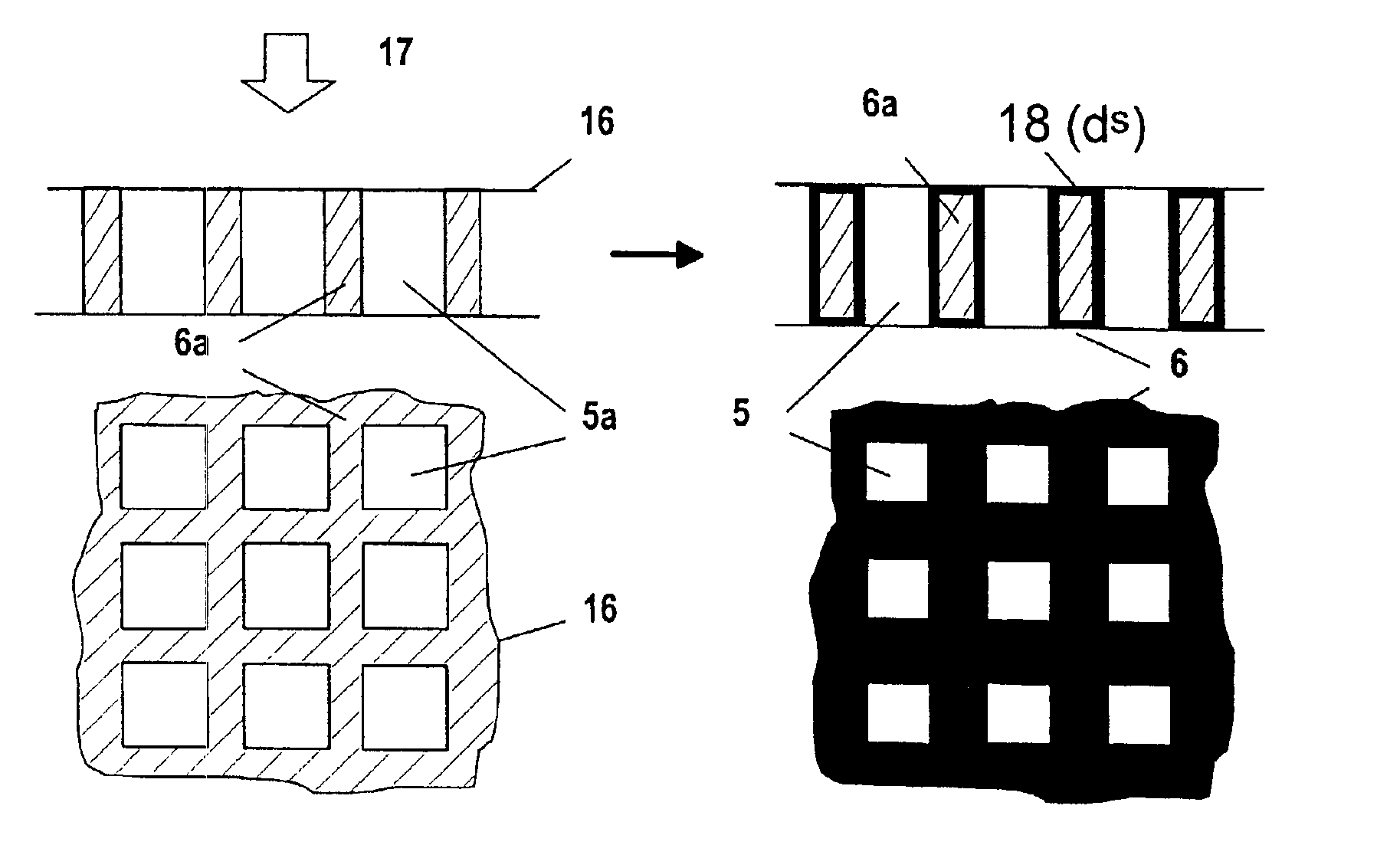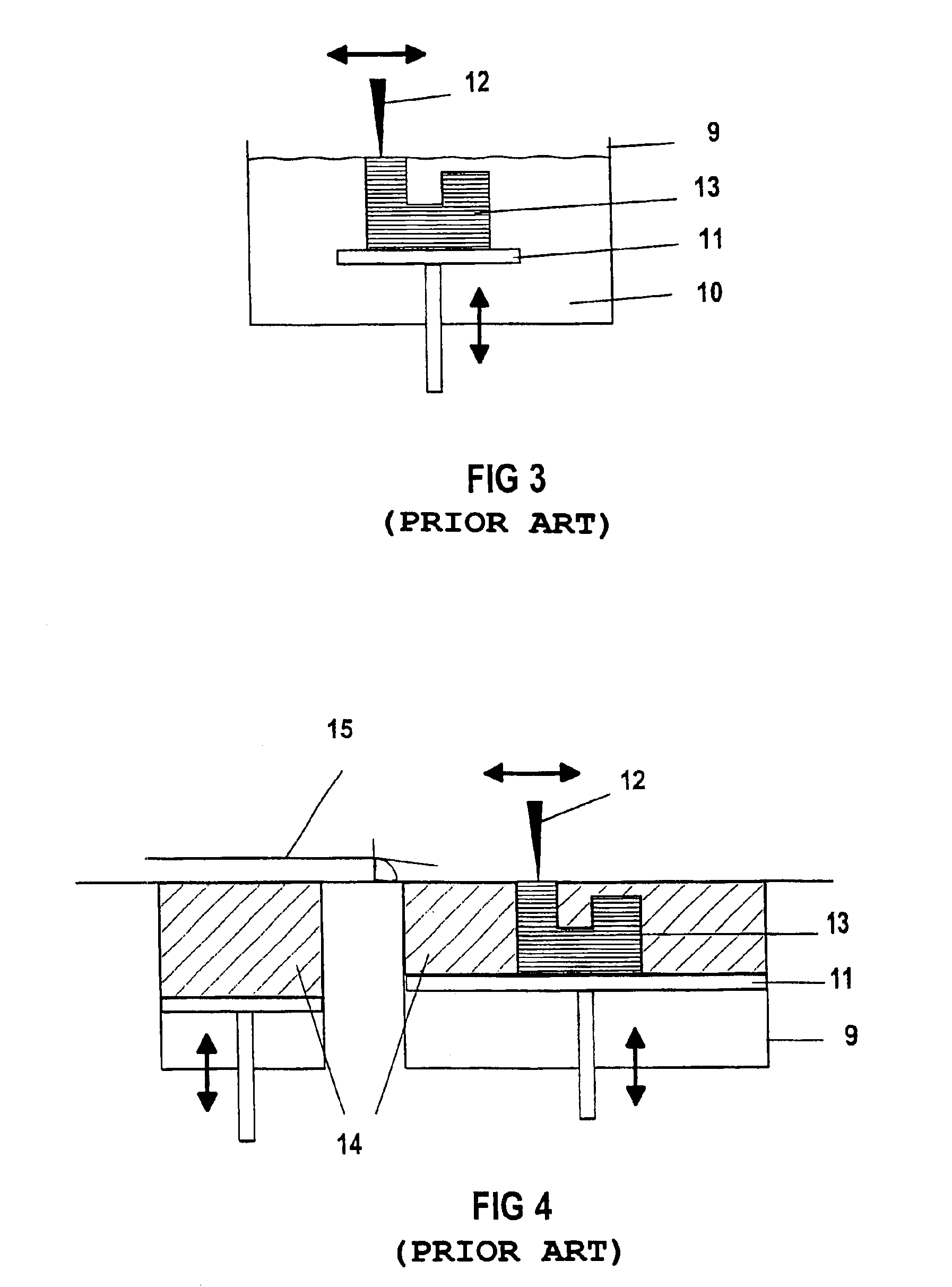Method for producing a scattered radiation grid or collimator
- Summary
- Abstract
- Description
- Claims
- Application Information
AI Technical Summary
Benefits of technology
Problems solved by technology
Method used
Image
Examples
Embodiment Construction
[0042]The typical situation when recording an x-ray image of an object 3 in x-ray diagnosis is represented schematically with the aid of FIG. 1. The object 3 lies between the tube focus 1 of an x-ray tube, which may be regarded as an approximately point x-ray source, and a detector surface 7. The x-rays 2 emitted from the focus 1 of the x-ray source propagate in a straight line in the direction of the x-ray detector 7, and in doing so pass through the object 3. The primary beams 2a striking the detector surface 7, which pass through the object 3 on a straight line starting from the x-ray focus 1, cause, on the detector surface 7, a positionally resolved attenuation value distribution for the object 3. Some of the x-ray beams 2 emitted from the x-ray focus 1 are scattered in the object 3. The scattered beams 2b created in this case do not contribute to the desired image information and, when they strike the detector 7, they significantly impair the signal-to-noise ratio. In order to ...
PUM
| Property | Measurement | Unit |
|---|---|---|
| Thickness | aaaaa | aaaaa |
| Gamma radiation | aaaaa | aaaaa |
Abstract
Description
Claims
Application Information
 Login to View More
Login to View More - Generate Ideas
- Intellectual Property
- Life Sciences
- Materials
- Tech Scout
- Unparalleled Data Quality
- Higher Quality Content
- 60% Fewer Hallucinations
Browse by: Latest US Patents, China's latest patents, Technical Efficacy Thesaurus, Application Domain, Technology Topic, Popular Technical Reports.
© 2025 PatSnap. All rights reserved.Legal|Privacy policy|Modern Slavery Act Transparency Statement|Sitemap|About US| Contact US: help@patsnap.com



